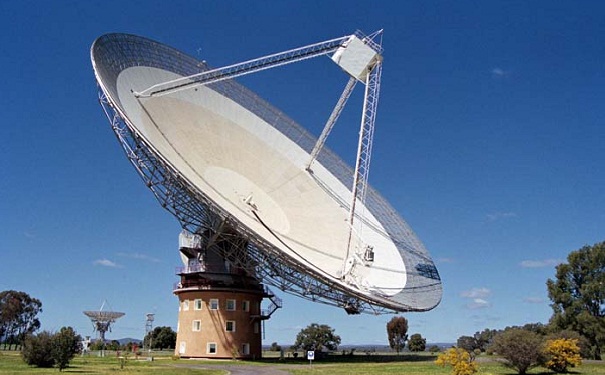
The CSIRO Parkes Telescope in Spring 2004. Photo copyright: John Sarkissian
CSIRO’s Parkes Observatory turns 50 on October 31 and is celebrating with public Open Days this weekend.

The CSIRO Parkes Telescope in Spring 2004. Photo copyright: John Sarkissian
CSIRO’s Parkes Observatory turns 50 on October 31 and is celebrating with public Open Days this weekend.